Energy Flow
Energy flow is the movement of energy through an ecosystem, from the sun to producers (plants), then to consumers (animals) and decomposers. This flow of energy is essential for the survival of all living organisms within the ecosystem.
Key Concepts
- Energy Source: The ultimate source of energy for most ecosystems is the sun. Sunlight is absorbed by plants through the process of photosynthesis, converting it into chemical energy.
- Producers: Plants, algae, and some bacteria are the producers in an ecosystem. They are able to convert the sun's energy into food through photosynthesis. This energy is stored in the form of carbohydrates.
- Consumers: Animals that feed on producers or other consumers are known as consumers. There are primary, secondary, and tertiary consumers, representing different levels in the food chain.
- Decomposers: Decomposers break down dead plants and animals, releasing nutrients back into the soil. They play a crucial role in the recycling of energy within an ecosystem.
- Food Chain and Food Webs: Energy flow can be represented through food chains and food webs, showing the transfer of energy from one organism to another.
Study Guide
Here are some key points to remember when studying energy flow:
- Explain the role of the sun as the primary source of energy in an ecosystem.
- Describe the process of photosynthesis and its importance in converting sunlight into chemical energy.
- Identify the different levels of consumers in a food chain and their roles in energy transfer.
- Explain the significance of decomposers in recycling energy and nutrients within an ecosystem.
- Compare and contrast food chains and food webs, and explain how they demonstrate energy flow in an ecosystem.
Understanding the concept of energy flow is essential for comprehending the interconnectedness of living organisms within an ecosystem and the dependence on a continuous energy supply.
.◂Science Worksheets and Study Guides Sixth Grade. Birds and Mammals
Study Guide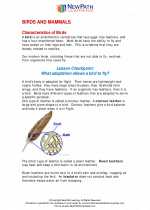 Birds and Mammals
Birds and Mammals  Activity Lesson
Activity Lesson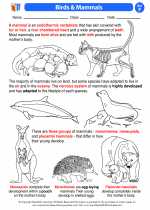 Birds & Mammals
Birds & Mammals  Worksheet/Answer key
Worksheet/Answer key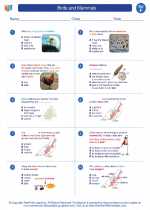 Birds and Mammals
Birds and Mammals  Worksheet/Answer key
Worksheet/Answer key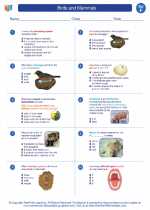 Birds and Mammals
Birds and Mammals  Worksheet/Answer key
Worksheet/Answer key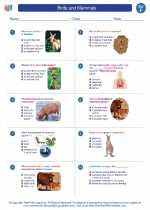 Birds and Mammals
Birds and Mammals  Worksheet/Answer key
Worksheet/Answer key Birds and Mammals
Birds and Mammals  Vocabulary/Answer key
Vocabulary/Answer key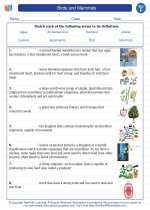 Birds and Mammals
Birds and Mammals  Vocabulary/Answer key
Vocabulary/Answer key Birds and Mammals
Birds and Mammals  Vocabulary/Answer key
Vocabulary/Answer key Birds and Mammals
Birds and Mammals  Vocabulary/Answer key
Vocabulary/Answer key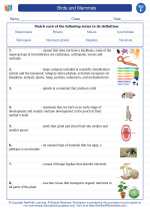 Birds and Mammals
Birds and Mammals  Vocabulary/Answer key
Vocabulary/Answer key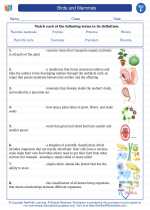 Birds and Mammals
Birds and Mammals 

 Activity Lesson
Activity Lesson
 Worksheet/Answer key
Worksheet/Answer key
 Worksheet/Answer key
Worksheet/Answer key
 Worksheet/Answer key
Worksheet/Answer key
 Worksheet/Answer key
Worksheet/Answer key
 Vocabulary/Answer key
Vocabulary/Answer key
 Vocabulary/Answer key
Vocabulary/Answer key
 Vocabulary/Answer key
Vocabulary/Answer key
 Vocabulary/Answer key
Vocabulary/Answer key
 Vocabulary/Answer key
Vocabulary/Answer key

The resources above cover the following skills:
LIFE SCIENCE
From Molecules to Organisms: Structures and Processes